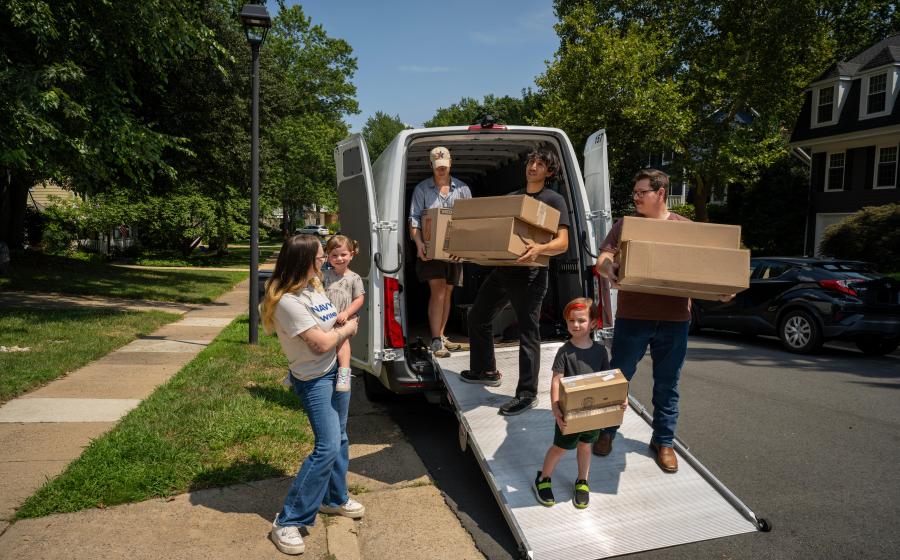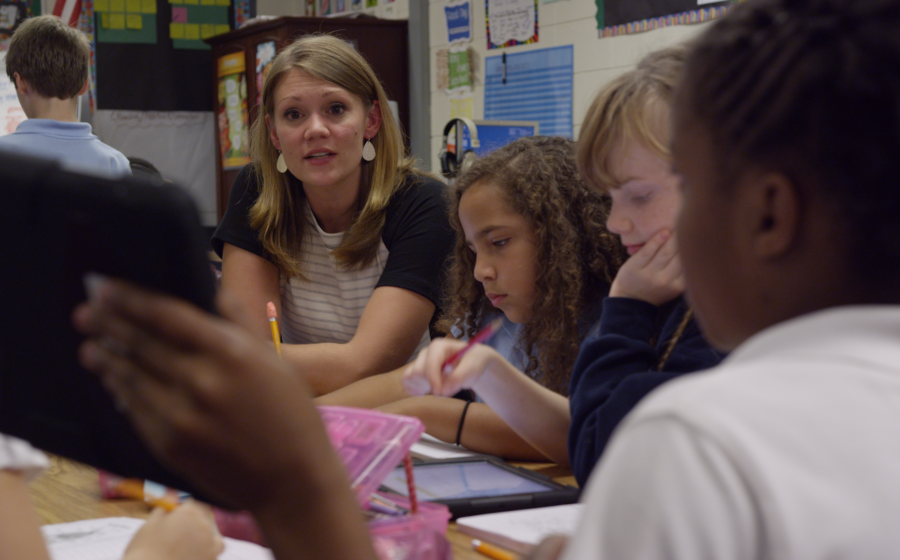Back to School, Back to Belonging: How We Can Support Military Kids and Families This Fall
(NewsUSA) - For most kids, the back-to-school season means catching up with friends, shopping for supplies, and falling back into familiar routines – military kids face a different reality. They’re often walking into yet another new school, in yet another new city.
- For most kids, the back-to-school season means catching up with friends, shopping for supplies, and falling back into familiar routines – military kids face a different reality. They’re often walking into yet another new school, in yet another new city.
Military kids typically attend 6-9 different schools before they graduate high school. Every time their parent receives orders for a change of station, the whole family is once again transplanted into a new community. And these moves aren’t from one base to another – 70% of military families live in civilian neighborhoods, not on military installations. Despite living alongside their civilian neighbors, only 39% of military families feel connected to them, according to the 2024 Military Family Lifestyle Survey.
For military kids, this means the start of school can feel lonely and overwhelming, with frequent moves disrupting everything that helps kids thrive: their friendships, extracurricular activities, and academic progress. That's why the way military children are welcomed into their new schools and communities matters so much. It can make the difference between facing yet another difficult transition and a fresh start filled with exciting possibilities.
This year, communities across the country have a chance to make that difference. The sixth annual Blue Star Welcome Week (September 27–October 5, 2025), presented by Blue Star Families, is a nationwide effort to turn the back-to-school season into a time of belonging for the 600,000 military families who move each year.
This nationwide call to action encourages neighbors, schools, and local businesses to create meaningful connections with the military families in their neighborhoods.
“Imagine you are a military kid on your sixth move, gearing up for your seventh new school – it’s tough,” said Kathy Roth-Douquet of Blue Star Families. “That’s one reason we developed Blue Star Welcome Week – to help schools, libraries, businesses, and neighbors ease the way for these kids and their families. It takes a village to support our military families, and Welcome Week is an easy and fun way for anyone to do their part. Help us welcome military families to your neighborhood and build a stronger, more united America at the same time!”
How to Do Your Part This School YearHere are five simple ways Blue Star Families encourages you to Do Your Part to welcome military families and help kids feel at home in your community during Welcome Week and beyond:
- Welcome Military Kids. Meeting classmates, exploring new places, and joining community activities helps them feel they belong. With free access to parks and cultural attractions through Blue Star Outdoors and Blue Star Museums, you can turn small gestures like an invitation or shared meal into lasting connections.
- Attend or Host a Community Gathering.Organize or join a neighborhood coffee, block party, outdoor movie, or potluck to help military families meet new neighbors and begin building local connections.
- Support Military Spouses and Parents.Consider hiring a military spouse, connect them to professional networks, or volunteer at a military-impacted school to bridge the military-civilian divide.
- Learn About Military Families’ Lives. The 2024 Military Family Lifestyle Survey shows that frequent relocations often create significant financial strain, with many families taking months – or even longer – to recover from the costs of a move. Taking time to understand these challenges is the first step toward meaningful support and building stronger, more connected communities.
- Every Little Bit Helps. Make a gift to Blue Star Families to strengthen programs that connect, support, and empower military families. Your donation can fuel initiatives and research that drive lasting change – ensuring families feel a true sense of belonging in their communities.
Blue Star Welcome Week is more than an event – it’s a movement to ensure every military child and family feels valued, supported, and truly at home.
Join the movement September 27–October 5, 2025. Learn more at bluestarwelcomeweek.org.



 - With the fall season here and parents settling into back-to-school routines, now is an ideal moment to ensure preschoolers are getting the best care and education possible for the year ahead. For many families, this means seeking programs that offer more than just a few hours of pre-K, and that align with family schedules and budgets.
- With the fall season here and parents settling into back-to-school routines, now is an ideal moment to ensure preschoolers are getting the best care and education possible for the year ahead. For many families, this means seeking programs that offer more than just a few hours of pre-K, and that align with family schedules and budgets.  -
-  “Animal Control” by Jonathan R. Miller
“Animal Control” by Jonathan R. Miller “Maya Blue: A Memoir of Survival” by Brenda Coffee
“Maya Blue: A Memoir of Survival” by Brenda Coffee “Night of the Bear” by Alan Cockrell and Richard Hess
“Night of the Bear” by Alan Cockrell and Richard Hess BookTrib’s Lit Picks: 36 Free First Chapters from the Hottest Books of 2025
BookTrib’s Lit Picks: 36 Free First Chapters from the Hottest Books of 2025 - From safer football helmets to groundbreaking laws that protect inventors, this year’s Intellectual Property Owners Education Foundation (IPOEF) award winners prove that one idea, when protected, can change everything.
- From safer football helmets to groundbreaking laws that protect inventors, this year’s Intellectual Property Owners Education Foundation (IPOEF) award winners prove that one idea, when protected, can change everything.
 - Cybercriminals send
- Cybercriminals send 
 - While no one plans to have a baby early,
- While no one plans to have a baby early, 
 - From hospitals to surgical centers, med spas to even your dentist’s office—chances are, you or someone in your family has already received medication from a compounding pharmacy without even knowing it.
- From hospitals to surgical centers, med spas to even your dentist’s office—chances are, you or someone in your family has already received medication from a compounding pharmacy without even knowing it.
 - As the school year gets underway across the United States, a new report illustrates that student engagement is essential for learning, but gaps remain about how to achieve, measure, and sustain students’ interest in the classroom.
- As the school year gets underway across the United States, a new report illustrates that student engagement is essential for learning, but gaps remain about how to achieve, measure, and sustain students’ interest in the classroom. 
 - The anti-inflammatory medication dupilumab, marketed as Dupixent, is the subject of a lawsuit alleging a link between the use of the medication and the development of a type of skin cancer known as cutaneous T-cell lymphoma (CTCL).
- The anti-inflammatory medication dupilumab, marketed as Dupixent, is the subject of a lawsuit alleging a link between the use of the medication and the development of a type of skin cancer known as cutaneous T-cell lymphoma (CTCL).
 - The end of summer means back-to-school season for families across the country. As parents shop for new backpacks and clothes, they should be sure not to overlook one of the most important parts of the back-to-school checklist – the visual health of their child.
- The end of summer means back-to-school season for families across the country. As parents shop for new backpacks and clothes, they should be sure not to overlook one of the most important parts of the back-to-school checklist – the visual health of their child.